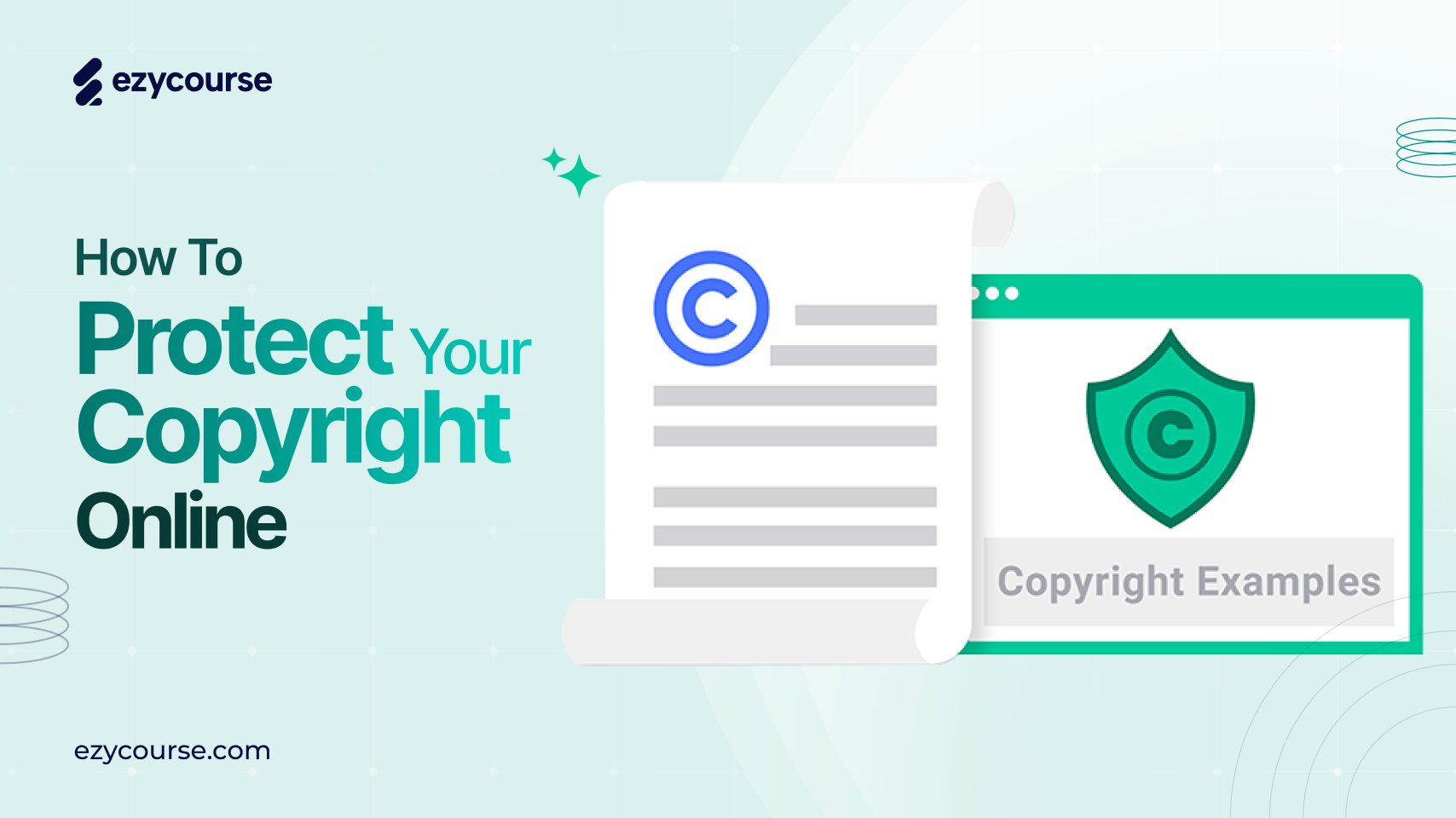Creators like you bring energy to the internet with your unique work. Yet there is a catch: the better your content, the more it can spark copycats and rip-offs that harm the real creator. That's why copyright protection online is essential.
Because virality matters so much online, you face a tough balance. You want to show your work to the world and shield it from misuse. That’s what we’ll discuss here: how to keep your creations safe in a digital market that is soon worth $500 billion.
When we discuss about online copyright protection, we also need to consider the legal aspect. If you publish material online, you should know these points to protect your rights.
So, let's start reading this article to learn more about how to copyright-free your content and how to check if something is copyrighted. Keep going!
What is Copyright Infringement?
If you use any content creator’s protected work without their consent, it's called copyright infringement. Whether you copy, share, perform, or lend that work, it's a copyright violation.
However, copyright protection online is about hindering and punishing copyright infringement.
Common Examples
Making copies
Giving out copies to the public
Renting or lending the work
Performing or showing it in public
Posting or sharing it online
If people find a work worth copying, it is likely protected by copyright. The examples above are primary infringements. Secondary infringement happens if you import or keep illegal copies or help others make them.
Misconceptions
You can still break copyright law if:
You received the material from someone else
Others seem to be using it.
You credit the original creator.
You add a phrase like “No infringement intended.”
You mix it with your own work.
Even accidental misuse can be a problem. Always make sure you have the right to use any material.
Also Read: Best Platforms for Content Creators
Legal Terms in Copyright
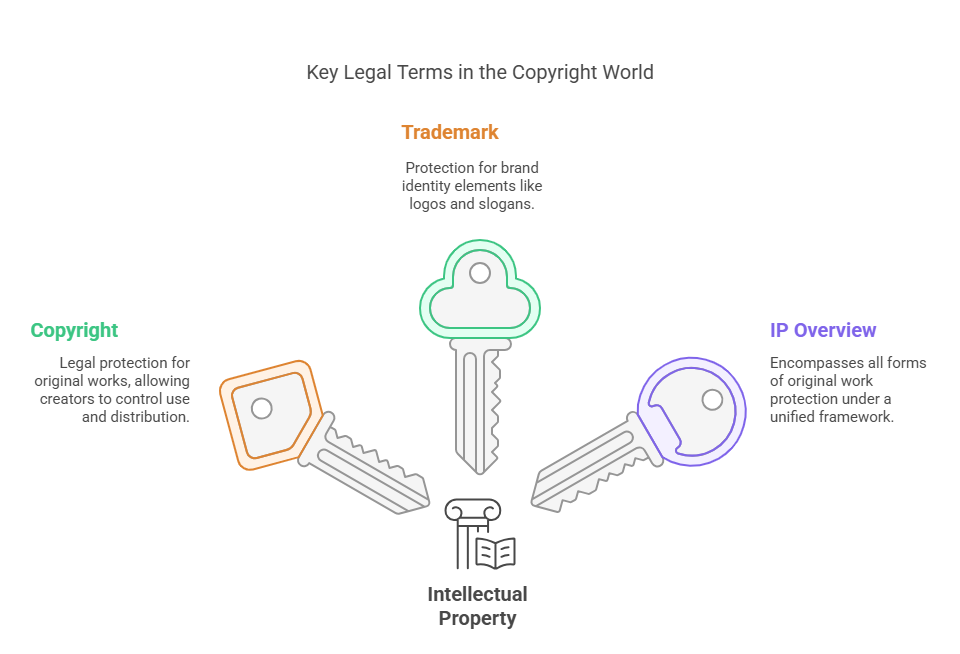
You may have seen terms like IP, copyright, and trademark mixed up with copyright protection online. But to stop fakes or copycats, you need to know each one. The standard legal copyright terms are:
1. Intellectual Property (IP)

IP is a big umbrella for all kinds of original work. It covers literary, artistic, musical, or visual creations. The moment you publish something, you have IP rights over it.
However, simply owning an IP cannot shield your work from misuse. You must also register other legal rights, such as copyrights or trademarks.
2. Copyright
Copyright is legal proof that you alone control how your original work is used. You can decide who can modify or distribute it. Anyone who uses it without your green light may face a copyright infringement case.
This protection typically lasts your entire lifetime plus 70 years unless you release it into the public domain. Copyright can also take different forms:
Single Ownership: You are the sole creator, so you get all the rights and any income from it.
Joint Ownership: When two or more people create something together, each one shares equal benefits and protection. This is common for team projects and research.
Collective Work: Multiple contributors add sections to make one big piece, like a documentary or group paper. Each person keeps the rights to their portion, but the finished product is owned by someone else. This often applies to “work for hire,” where employees or freelancers transfer rights to the client.
3. Trademark ™️

A trademark is another branch of IP that protects your brand identity. Think of logos, slogans, designs, or any unique brand marks. The symbols ™ or ® show that something is trademarked.
Trademarks differ from copyrights because they guard against brand lookalikes rather than copying written or visual content.

What Falls Under Copyright and What Does Not?
The following things fall under online copyright protection:
Written works, such as books, poems, stage scripts, reference texts, or newspaper content.
Computer software and data collection;
Films, musical scores, and choreographed routines;
Art forms like paintings, drawings, pictures, and sculptures;
Architectural designs; and
Commercial ads, maps, and technical blueprints.
Copyright law shields only the tangible expression, not the underlying ideas, methods of operation, or mathematical concepts.
Some items—like titles, short phrases, or brand symbols—may not qualify unless they reflect enough original creativity. If these elements have minimal authorship, copyright protection online may not be applicable.
Copyright Protection Online: How to Keep Your Works Safe?
Once you create an original photo, poem, video, book, game, blog post, or similar work, it gains copyright protection immediately. However, that does not guarantee that people will honor your rights.
Below are some ideas to raise awareness about your right to decide how your creations are used. Think about these points before putting any of your original work on the internet:
Reflect on whether it is wise to post specific images or material publicly. If you might regret it later, it is best not to share it.
Consider who should be allowed to see your content. Limiting your audience is often safer than posting too much and risking misuse.
Another tip is to offer only low-resolution images or graphics. That way, it becomes less attractive for others to copy them.
We recommend that you include a copyright notice. There are various ways you can do this:
For Images
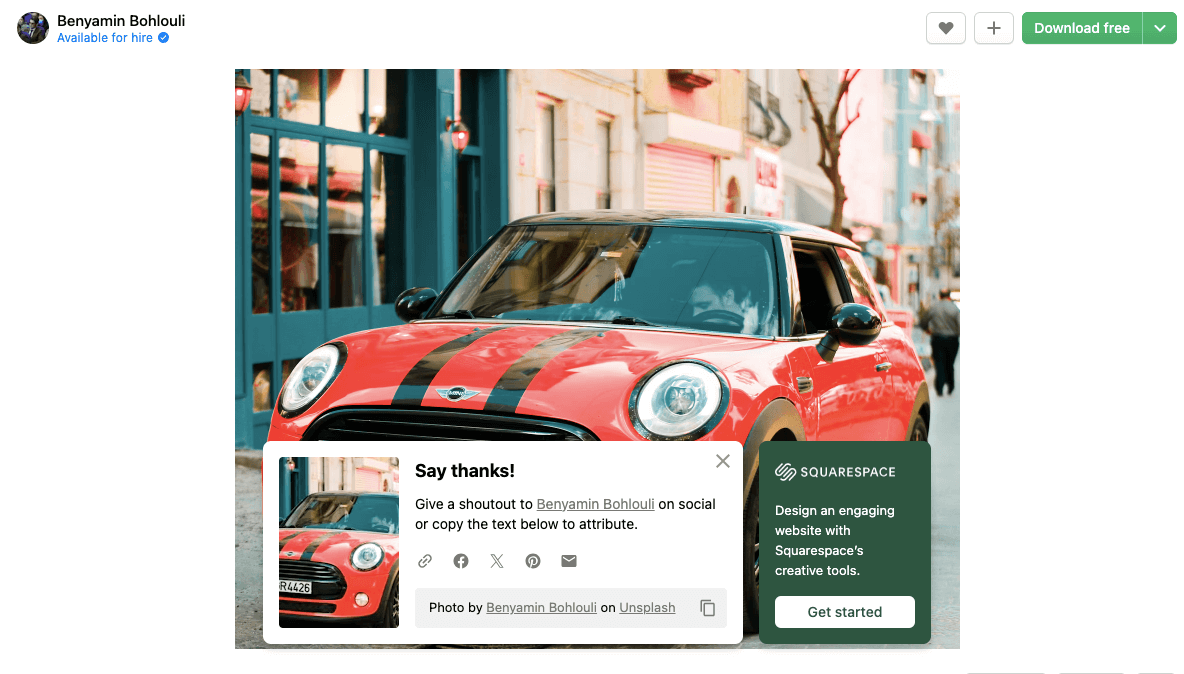
Use editing software to place a copyright watermark on top of your picture.
Or, add a line of text with a basic program (like Paint) stating, “This image is copyright protected. Please do not use without permission.” Or, add copyright attribute with your image.
When you layer a watermark over a photo, people can still view the picture clearly, but they cannot simply crop out the text. Also, stealing will be less appealing if you share a lower-resolution image.
For Text
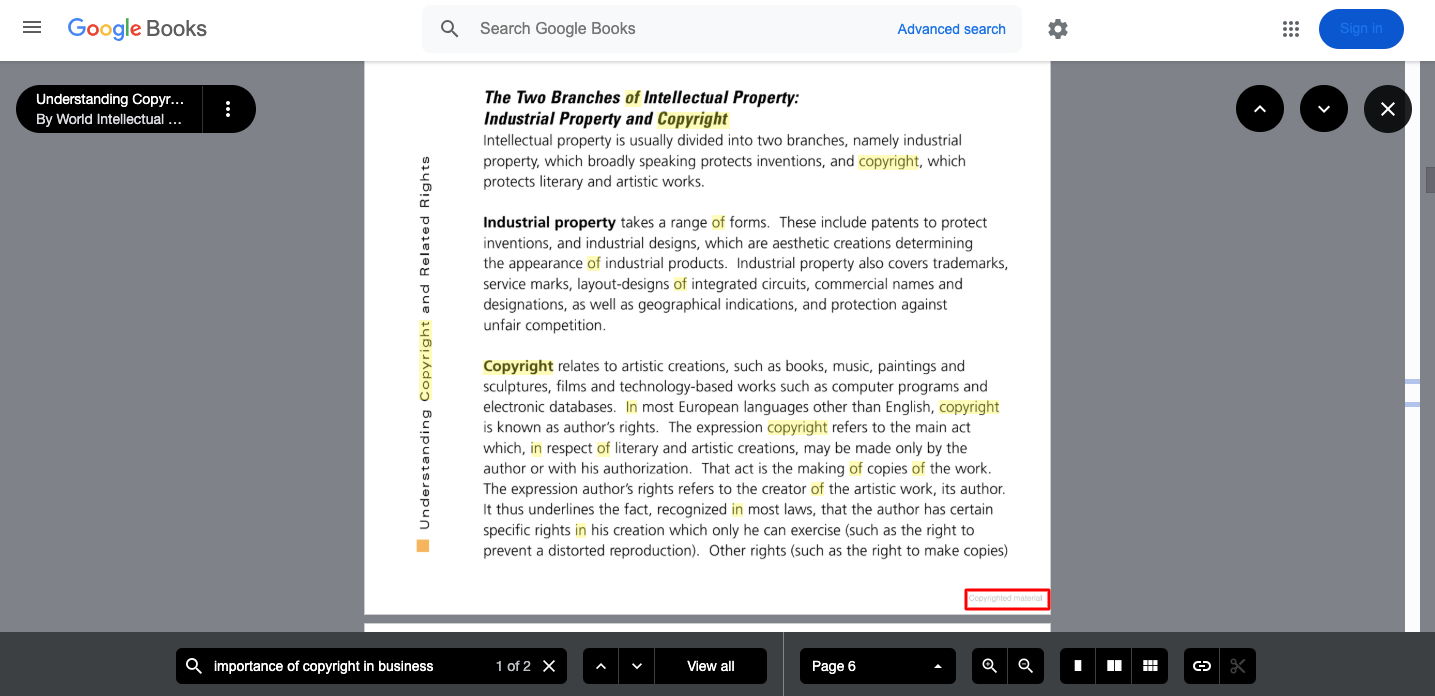
Many word processors let you add a faint copyright watermark behind your words.
You can also include a short line in the footer or a caption reminding readers that your text is protected.
A diagonal watermark can be distracting. To avoid this, you can include copyright details at the bottom of each page. That way, it is always present but less in the way.
These steps will not completely stop someone from taking your work, but they will remind everyone that you own it. Using it without your consent is still theft.
Worried about your contents being stolen or copied? Use our Digital Right Management add-on to prevent unauthorised downloads, screenshots or even screen recording.
13 Best Ways for Copyright Protection Online
Registering your trademark and copyright creates a solid legal base. But you shouldn't wait until someone steals your work to act. Use these methods now to keep your content and identity safe.
1. Register Your Copyright with the U.S. Copyright Office
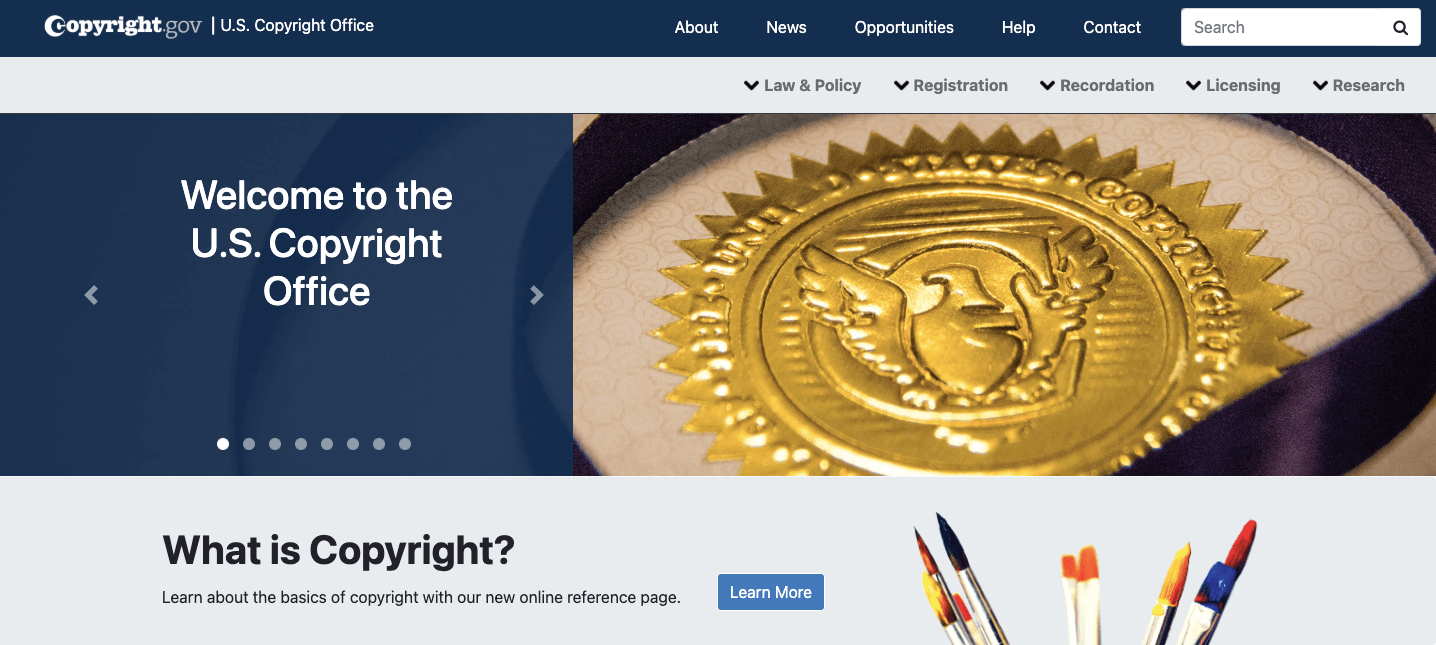
One important step in copyright protection online is securing your work with the U.S. Copyright Office. This step provides official proof of ownership and lets you take legal action against misuse.
Why Register Your Copyright?
Signing up for your copyright brings key benefits for digital copyright protection:
Legal Action: Let's you file a lawsuit if someone steals your work
Statutory Damages: These make you eligible for certain financial awards and fees
Public Record: Places your ownership details in a public database
Prima Facie Proof: Establishes initial proof that your copyright is valid
How to Register Your Copyright?
To register your content copyright, follow the easy steps below:
Create an Account: Go to the U.S. Copyright Office website and sign up.
Fill Out the Application: Provide details about the material you want to protect.
Submit the Material: Send digital or physical copies of your work as needed.
Pay the Fee: Cover the registration cost, which varies based on the submission type.
Wait for Confirmation: Watch for approval and save your certificate. It proves you legally own your content.
Having that certificate on hand is vital. It supports your claim if you need to defend your rights.
2. Display Copyright Notices and Apply Watermarks
You can protect your copyrighted online work by placing clear copyright notices and using watermarks. These provide warnings to potential violators and make it easier to track stolen items.
Where to Display Your Copyright Notice?
Place your notice in these spots:
The footer of your website
Terms and Conditions page
Directly on each piece of content (like images or videos)
How to Set Up Your Copyright Notice?
A standard notice has three parts:
Copyright Mark: ©
Owner's Name: Your name or your organization's name
Publication Year: The Year when you first shared the content
An example would be: "© 2025 [Your Name]."
Applying Watermarks
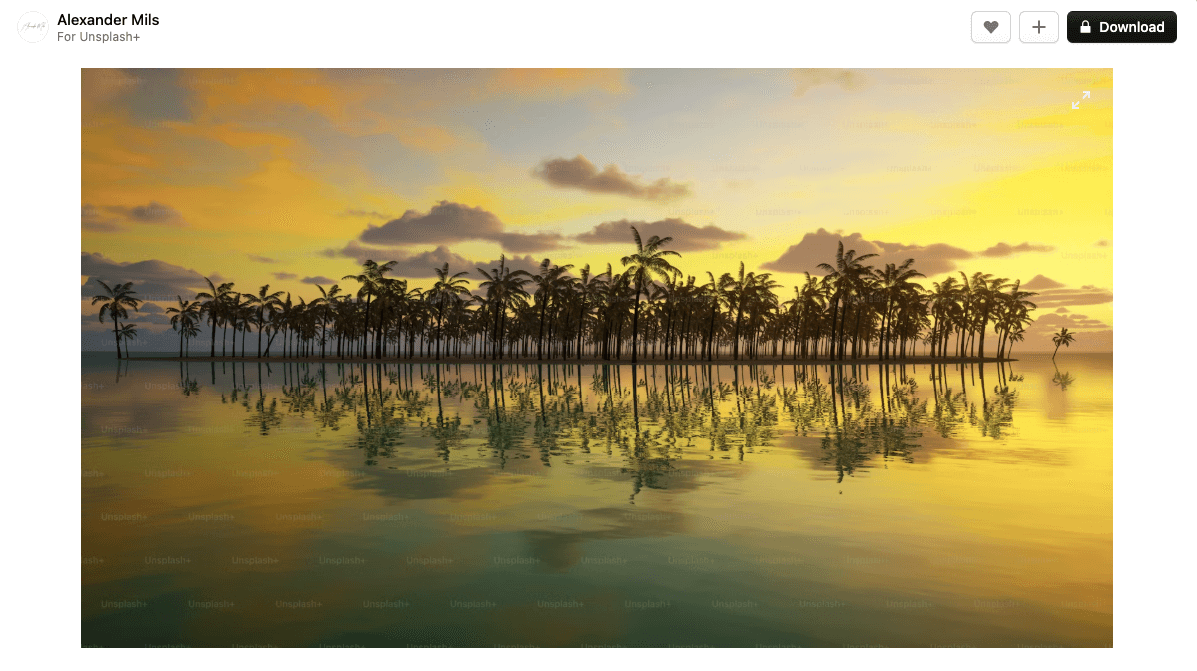
You can add watermarks to your images, videos, or audio to ensure copyright protection online. Think about these factors:
Transparency: Make it visible but not distracting
Placement: Pick a spot that's tough to erase
Size: Cover enough area so it can't be removed without harming the file
Following these tactics can help you spot unauthorized use. We also recommend registering your copyright so you have the law on your side.
3. Control Access and Use Encryption for Important Content
You can rely on several encryption techniques to safeguard your most valuable work. The methods are:
Asymmetric Encryption: This encryption uses a public key to lock the data and a private key to unlock it.
Symmetric Encryption: This employs one secret key for both encrypting and decrypting your data.
Tokenization: Swaps sensitive information with substitute tokens, making it tough to uncover the original data.
Implementing Encryption
Adopt these tools and tactics to add protective layers to your online assets:
Content-Locking Tools: Code your files so only authorized individuals can access them.
Digital Rights Management (DRM): Blocks illegitimate sharing or copying of your creations.
Geofencing: Limit content access based on geography, ensuring only users in selected areas can open it.
Restricting access and encrypting data help secure your online property and reduce theft. You should also register your copyright to gain official legal protection.
If you are looking for building your own platform where you can secure all your content, you can consider using EzyCourse. It’s an all-in-one online coaching platform for coaches. Interestingly, this platform comes with an exclusive add-on named DRM Solution.
4. Monitor Your Content for Unauthorized Use
Monitor your work and track any unapproved usage. This involves scanning the Internet for material that has been copied, shown, or shared without your consent.
How to Monitor Your Content?
Here are some practical ways to spot violations:
Copyright Services: You can use specialized digital fingerprinting platforms to detect and flag stolen content.
Online Search: Run frequent name or keyword checks to reveal unauthorized replicas of your work.
Community Engagement: Build rapport with followers who can alert you if they see your material used elsewhere.
Record your findings to have proof if legal steps become necessary.
5. Actively Pursue Action Against Infringement
Once you find someone abusing your rights, act swiftly to protect your intellectual property. Below are the essential steps:
i) Send a Cease and Desist Letter
Contact the offender and demand the removal of the infringing content. Use a formal letter template or consult a legal professional to ensure your message is clear.
ii) File a DMCA Takedown Notice
If the infringer ignores your request, file a Digital Millennium Copyright Act (DMCA) notice with the site's hosting service or platform. This request compels the provider to take down the copied content.
The DMCA is a decisive first step if someone misuses your creations. A DMCA notice alerts the offender and asks the hosting service to remove the stolen content.
However, you can file a copyright lawsuit if nothing changes after a few days. You can use DMCA regardless of whether your work is registered with the U.S. Copyright Office.
iii) Identify the Hosting Company
Find out which company or platform hosts the offending site using tools like Whois or Domain Tools.
iv) Draft the DMCA Takedown Notice
In your notice, include details such as:
Your Signature: Signed in person or digitally
Contact Info: Your name, address, phone, and email
Location of the Content: Exact URL or other identifiers showing the stolen material
Statement of Good Faith: Declare that, to the best of your knowledge, the content use isn't authorized
Accuracy Statement: Confirm that the notice is truthful under penalty of perjury
v) Submit the DMCA Takedown Notice
Send your notice to the host or platform. They will remove the copied material from their servers. Keep records of every step you take in case you need to escalate the matter legally.
6. Clarify Ownership and Usage Permissions
Establishing who owns a piece of digital work is vital. The business often controls those rights if you create content under a company's umbrella. If you work as a freelancer, you may keep ownership.
We recommend that you identify these details early to avoid confusion.
i) Identify the Rights of the Holder
Figure out which individual, group, or entity legally holds the rights. Ownership can rest with you, your client, or your employer. Make this clear in any contracts or formal agreements.
ii) Determine the Required Permissions
Once ownership is set, decide which types of use need approval. That might include copying, displaying, sharing, or altering the material.
iii) Set Transparent Licensing Terms
Prevent future mishaps by writing clear license rules in any contract. For example, specify who can reuse the content and if changes or public posting are allowed.
iv) Document Everything
Keep a record of ownership and approved uses. Mark your work with a copyright statement, and note any permission you've granted or denied. That way, you can quickly verify your rights if disputes arise.
Identify the Rights Holder: Find out who officially owns the content.
Set transparent Licensing Terms: Outline allowed uses in written agreements.
Determine Needed Permissions: Clarify which actions require approval.
Document Everything: Retain proof of ownership and any granted rights
Spelling out who owns your work and how it can be used helps you maintain complete control over your digital product.
7. Consult A Copyright Attorney
A lawyer who focuses on copyright can be a valuable resource. They understand the laws that shield your content and can guide you through both routine and complex legal questions.
i) Know Your Legal Safeguards
Copyright attorneys can explain your rights in plain words. They'll outline what counts as wrongful use of your work and how to defend it. They can also advise you on whether you need formal registration and can lead you through the steps if you need to.
ii) Responding to Misuse
If someone misuses your material, a lawyer can help. They may draft a cease-and-desist letter, broker a deal, or advise you on legal action if necessary.
iii) Simplifying the Law
An attorney can clear up points about fair use, public domain, and how long protection lasts. That way, you'll make informed choices about your work.
Consult a copyright attorney: Get expert support on legal protections.
Responding to misuse: Take action if others use your content without approval
Know your legal safeguards: Understand your rights and how to defend them
Simplifying the law: Clear up issues about fair use, public domain, and timing
A legal ally ensures you make wise decisions and stand up for your creative rights.
8. Build a Unique Brand
Trademark fights are simpler when your brand identity stands out. Think of Liquid Death, Nike, Airbnb, or Prime energy drinks. It's hard to rip them off without being obvious.
Brands like HubSpot and Slack also have distinct content styles. By staying original and consistent, you can defend yourself from fakes and identity thieves.
9. Document and Track Your Creations
Record all the details when you publish your work. Note the date, time, category, and special elements. Keep backups of your posts in one place.
These records help you stay organized and give you evidence if you ever go to court. Using plagiarism checkers can often alert you to online copies or duplicates.
10. Discuss Joint and Collective Copyrights
Copyright cases can get messy if you don't know who owns what. When you create with others, make sure everyone agrees on the terms.
If you're freelancing for clients, consider temporary access agreements (licensing) or total rights transfers (assignment). This keeps everyone on the same page.
11. Know the Copyright Rules on Social Media
Each social platform has its own policies for handling content disputes. Take time to learn these guidelines. When you spot someone infringing on your rights, you'll know how to flag it fast.
12. Use Digital Rights Management (DRM) Tools
DRM tools offer extra security through encryption, watermarks, and controlled access. Many writers and bloggers use them to limit who can view or copy their work. Platforms like EzyCourse lets you create your own website and gives you extra DRM tools to protect your digital works online.
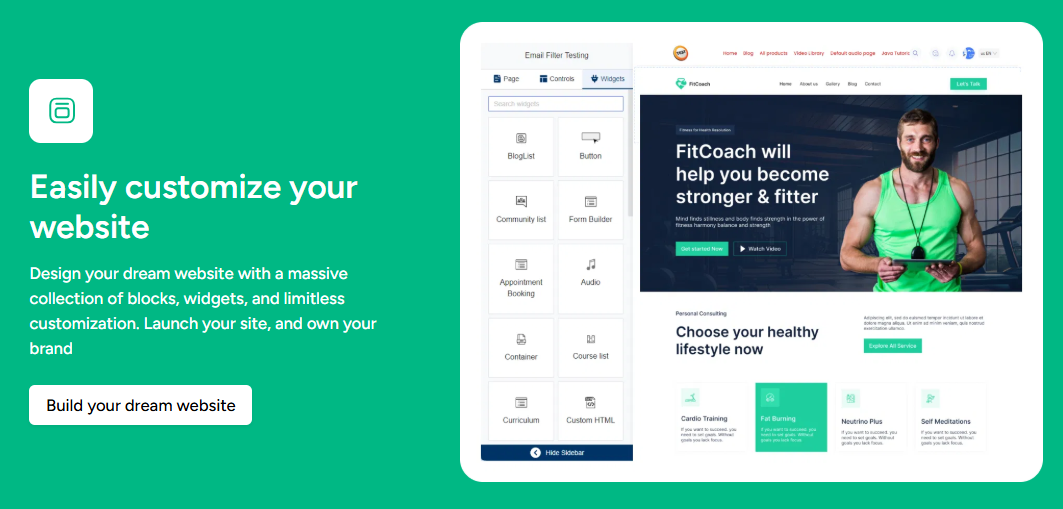
13. Stay One Step Ahead
True creativity is tough to fake. While others may feel inspired by your work, watch for those who try to profit from it. Register for copyrights and trademarks, and watch your online identity closely.
Membership platforms like EzyCourse and its tracking tools help you follow your content's online path. With these actions, you'll be ready to protect what you create.
How to Qualify for Copyright Protection?
An online course creation must meet the originality requirement to get copyright protection. An original piece is one made independently, without directly imitating another person’s work or borrowing from public domain material.
The focus is on the specific manner of expression, not the underlying idea itself. Some nations also mandate that a work be captured in a tangible format, like written text, digital storage, painted art, or recorded media.
Unrecorded dance, extemporaneous speeches, or live music performances that haven’t been written down or taped are not covered in copyright protection online.
Copyright law covers unique expression, not raw ideas or concepts. It does not shield the idea, theory, process, discovery, principle, or system, even if described in a particular work.
How Do You Show Proof of Online Content Creation?
You can show that you created a work at a certain point in time through:
Registration: In some places, you can pay a fee to deposit or officially register your creations with a national copyright office. This process provides legal proof of your copyright claim.
Deposit: You could leave a copy of your work with a trusted entity like a lawyer or a bank. Another method is to mail yourself a sealed copy by tracked delivery and keep it unopened, though not all regions recognize this as solid proof.
Marking: Published works should display a copyright symbol. You could also add standardized identification, such as an ISBN for books, an ISRC for music, or an ISAN for videos.
While most countries do not mandate a copyright notice for legal protection, it is strongly recommended. A notice clarifies that the material is protected, which can discourage unauthorized copying. It also shows you own the rights, helping potential users contact you for permission.
10 Tips to Avoid Copyright Issue
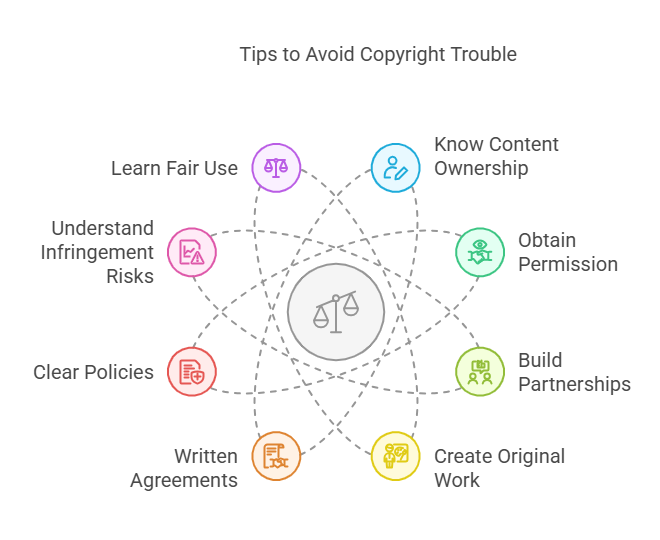
Copyright law matters for both individuals and businesses. If you are confused on how do I get a copyright, here are 10 tips for you to help you stay safe and confidently run your venture.
1. Know Who Owns the Content
The person who creates a work holds its rights. They alone decide how that work is used, shared, or sold. You risk breaking the law if you do not create or buy what you want to use.
Even if you see free material online, that does not always mean you can copy it. The same rule applies to your own work. If you made it, then you hold the rights. Others can’t use it without your consent.
2. Always Get Permission
Ask for written consent before using anyone else’s content. Sometimes, a quick message to the owner is enough. In other cases, you may need a formal license.
3. Build Partnerships Instead of Copying
If your work inspires you, reach out to other creators. You might propose a joint project that benefits both parties. This avoids copyright issues and can lead to fresh ideas.
4. Produce Original Content
Copyright hinges on unique expression. Sure, many others operate in your niche. But you can still set yourself apart by offering your own perspective.
Share your insights, style, and personal stories. Express familiar ideas in a way that belongs to you. Stay away from outright copying anyone else’s work.
5. Have Written Copyright Agreements
You should sign a copyright ownership transfer contract if you pay someone to handle your brand's design, writing, or photos. Without a formal agreement, the hired creator remains the rights holder. That means they can reuse or even sell that material elsewhere.
6. State Your Copyright Policy Clearly
You should tell customers how they can access and use your materials. If they enroll in your course or buy your products, you can clarify any limits on sharing or repurposing.
For instance, can they post snippets of your lessons on social media? If not, make it clear. If you need help drafting these rules, you can consult a legal expert.
7. Know the Risks of Infringement
Misusing another person’s creation can damage your image. Once your audience learns you copied or stole content, they will lose trust. In addition, breaking copyright law can lead to costly fines and even prison in some places.
So, be sure you have the right to use the materials you share or sell. And let customers know their rights and limits.
8. Learn About Fair Use
Fair use of your online content allows you to use small parts of someone’s work for certain purposes, like critique, commentary, or reporting.
Each country treats it differently. If you monetize content that relies on someone else’s work, it might no longer be fair use. Also, platforms like YouTube have special rules. Be sure to read them before uploading clips you didn’t create.
9. Use Public Domain and Free Resources
Works in the public domain are free for anyone to use. Some creators put their work in the public domain from the start, while others lose copyright after a certain period.
We recommend you seek out open libraries or archives for text, images, and videos. You can also look at Creative Commons licenses, which let you know which rights apply to each piece of content.
10. Credit Your Sources
No one exists in a bubble. We all draw from what we see and hear around us. But if you borrow heavily from another person’s ideas, say so. Tag them on social media or mention them in your post, paper, or video.
In formal work, cite them properly. Giving credit shows respect and can shield you from possible legal issues.
By following these ten tips, you can reduce your copyright risks. You’ll also build a better reputation and show respect for fellow creators.
Frequently Asked Questions
How can you protect yourself from copyright?
Recognize what copyright laws cover.
Avoid copying any existing work.
Only use material with permission.
Create original content.
Secure written copyright contracts.
Clearly communicate your copyright policy to users.
What four things are protected by copyright?
Copyright safeguards creative works in literature, drama, music, and art. This includes novels, scripts, songs, software, and building designs.
Who owns the copyright?
A copyright holder is a person (or group) who creates an original piece and fixes it in a tangible form, like taking a photo or writing a poem. Businesses or organizations can also be copyright owners if the work was done on their behalf.
How do I get a copyright?
You automatically get copyright protection as soon as you create an original work and fix it in a tangible form. For example, writing a blog post, recording a song, or designing a logo. However, to strengthen your legal rights and make enforcement easier, you can formally register your work with your country's copyright office (such as the U.S. Copyright Office). Registration provides public proof of ownership and is highly recommended if you want to take legal action against infringement.
Conclusion
Online works deserve a thorough defense to preserve their worth. You can protect against unauthorized sharing or copying by following the above-mentioned techniques.
The key points to ensure your copyright protection online are:
Register your online content to ensure copyright protection
Add copyright notices and embed watermarks
Control access and use encryption to keep valuable data secure
Keep an eye out for misuse of your content
Take immediate steps when others breach your rights
Clarify ownership and usage permissions
Consult a copyright attorney if questions or conflicts arise
Follow the above steps to ensure your content’s copyright. If you have any further ideas about how to protect online content copyright smartly, share them with us in the comment section.

